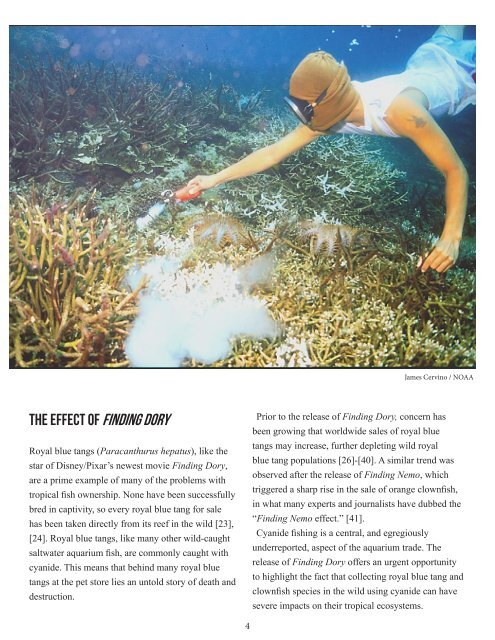Create successful ePaper yourself
Turn your PDF publications into a flip-book with our unique Google optimized e-Paper software.
James Cervino / NOAA<br />
The Effect of Finding Dory<br />
Royal blue tangs (Paracanthurus hepatus), like the<br />
star of Disney/Pixar’s newest movie Finding Dory,<br />
are a prime example of many of the problems with<br />
tropical fish ownership. None have been successfully<br />
bred in captivity, so every royal blue tang for sale<br />
has been taken directly from its reef in the wild [23],<br />
[24]. Royal blue tangs, like many other wild-caught<br />
saltwater aquarium fish, are commonly caught with<br />
cyanide. This means that behind many royal blue<br />
tangs at the pet store lies an untold story of death and<br />
destruction.<br />
Prior to the release of Finding Dory, concern has<br />
been growing that worldwide sales of royal blue<br />
tangs may increase, further depleting wild royal<br />
blue tang populations [26]-[40]. A similar trend was<br />
observed after the release of Finding Nemo, which<br />
triggered a sharp rise in the sale of orange clownfish,<br />
in what many experts and journalists have dubbed the<br />
“Finding Nemo effect.” [41].<br />
Cyanide fishing is a central, and egregiously<br />
underreported, aspect of the aquarium trade. The<br />
release of Finding Dory offers an urgent opportunity<br />
to highlight the fact that collecting royal blue tang and<br />
clownfish species in the wild using cyanide can have<br />
severe impacts on their tropical ecosystems.<br />
4


